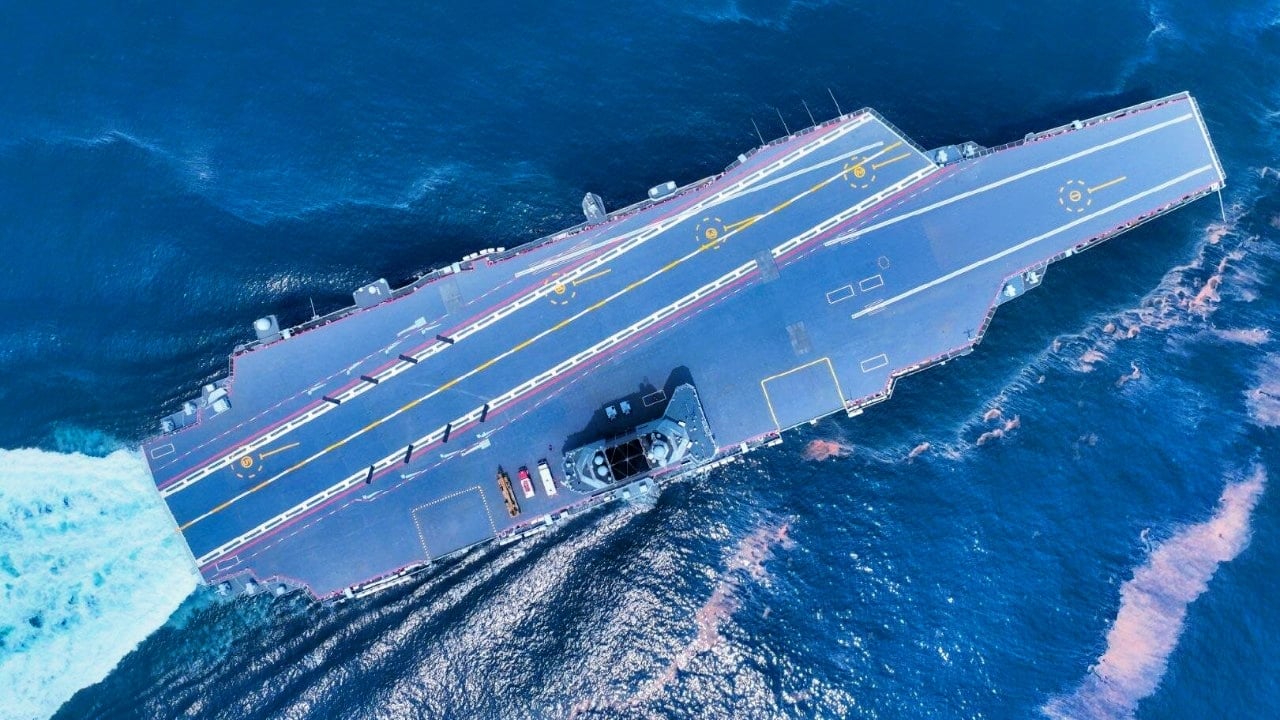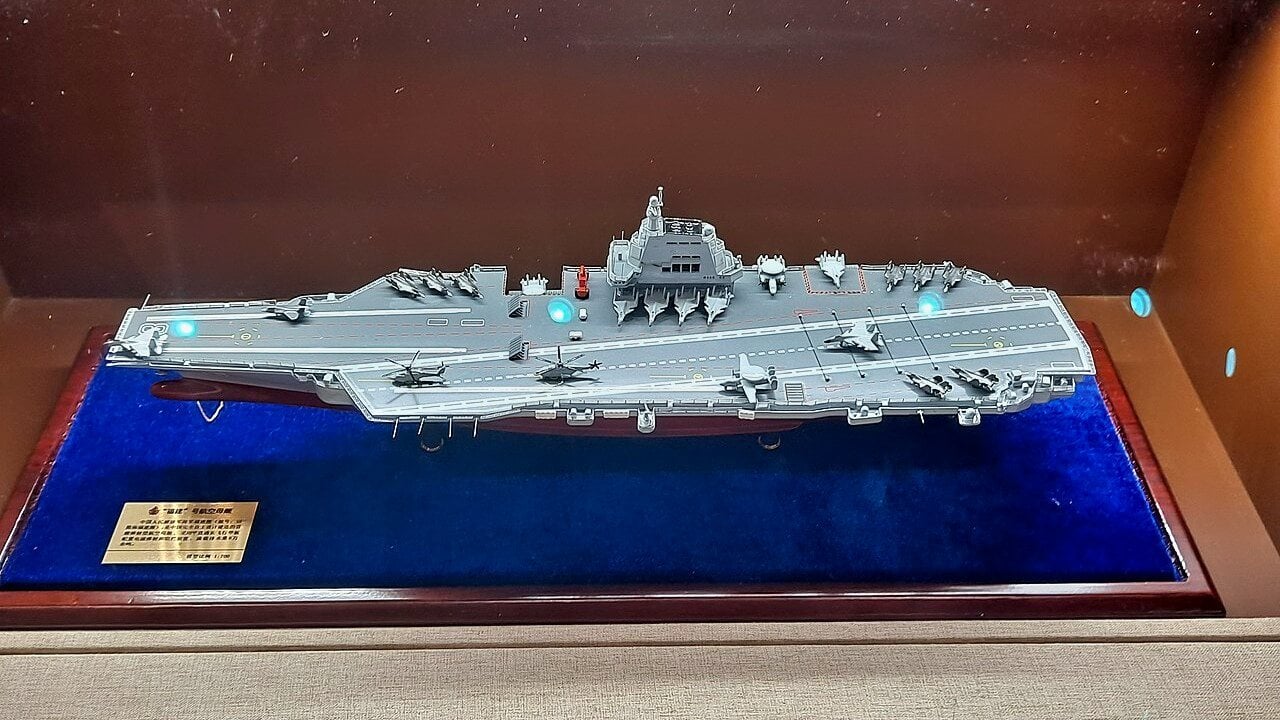China Could be Preparing to Build a Nuclear-Powered Aircraft Carrier
China's development of a nuclear-powered aircraft carrier could soon place it among the elite naval powers, joining the U.S. and France.
What You Need to Know: China's development of a nuclear-powered aircraft carrier could soon place it among the elite naval powers, joining the U.S. and France.

-Satellite images suggest Beijing is close to creating a prototype of a nuclear propulsion system for a carrier, potentially enabling the People’s Liberation Army Navy (PLAN) to operate globally, projecting "blue water" capabilities beyond regional waters.
-Despite this, China’s carrier operations face logistical challenges, such as a limited number of overseas bases and replenishment ships, critical for sustained global reach.
-The first nuclear-powered Chinese carrier may be operational by the 2030s, symbolizing significant prestige but facing practical limitations.
China’s Nuclear-Powered Carrier: Game Changer or Symbolic Leap?
Currently, only two nations – the United States and France – operate nuclear-powered aircraft carriers. The UK's Royal Navy had rejected nuclear power early in the development of its Queen Elizabeth-class program, arguing that several decades of fuel would cost less than a nuclear reactor.
Although the Soviet Navy had sought to build a nuclear carrier – the program was left dead in the water with the collapse of the Soviet Union in 1991. Moreover, it has been speculated that the Soviet carrier would have failed to reach the capabilities of the U.S. Navy's Nimitz class.
China's People's Liberation Army Navy (PLAN) could succeed where Moscow failed, and London refused, to go.
The Associated Press reported on Monday that U.S. researchers have confirmed that Beijing is now developing a nuclear-powered propulsion system that could provide power to a large surface warship, namely a carrier. Analysis of satellite imagery of China's 701 Institute – formally known as the China Ship Research and Design Center – concluded that it has already produced a land-based prototype, and all indications are that it seeks its next carrier to be nuclear-powered.
A nuclear-powered carrier would advance the PLAN's ambitions to be a true "blue water" naval force, one that could operate from distances beyond its regional waters.

"Nuclear-powered carriers would place China in the exclusive ranks of first-class naval powers, a group currently limited to the United States and France," Tong Zhao, a senior fellow at the Carnegie Endowment for International Peace in Washington, D.C. told the AP. "For China's leadership, such a development would symbolize national prestige, fueling domestic nationalism and elevating the country's global image as a leading power."
New But Not Exactly News
Speculation of a planned nuclear-powered Chinese carrier has been ongoing for years, but concrete evidence has remained sparse. In the past decade, Beijing has been ready to invest billions in the development of new molten salt nuclear reactors, which could pave the way for the technology to power a carrier. However, the efforts have been hit with delays and cost overruns.
It has previously been reported that the still-notional Type 004 should be expected to be part of the PLAN's ongoing expansion, but it certainly couldn't be completed by the end of the decade, and wouldn't enter service until the middle of the 2030s. Even then, we must ask what would it accomplish.
As it currently stands, China – unlike the United States or the UK's Royal Navy – has never actually used its carriers in combat operations. As Reuters reported last year, China's current flattops play a "theatrical role" but pose little threat at present.
"Unlike other parts of their military modernisation, there is something politically theatrical about their carrier deployments so far," said Trevor Hollingsbee, a former British naval intelligence analyst, told Reuters. "Carrier operations are a very complicated game, and China's got to figure this out all by itself. It still has a long, long way to go."
Power Project But With an Achilles Heel
Carriers can indeed project power around the globe, a fact that is clear as the U.S. Navy can deploy carriers to the Middle East and the Far East at the same time.

Likewise, the British Empire may be a thing of the past, but the Royal Navy deployed its flagship carrier HMS Queen Elizabeth to the Indo-Pacific and back, a reminder to the world that Britain once ruled the waves.
Yet, the carrier was able to do so because it was supported by partners and allies, while the U.S. Navy has bases around the globe. China has far fewer partners, and at present has only one overseas base. That fact would make its replenishment ships all the more crucial for any globetrotting voyage.
Such vessels ensure a supply of fuel for a carrier's escorts and its air wing – and though the PLAN is ramping up its efforts to increase its fleet of those replenishment ships, it still doesn't have all that many friendly ports far from its shores.
Thus, in the next decade, Beijing may seek to establish new overseas ports so that when its first nuclear-powered carrier hits the water it will have friendly bases to support its maiden deployment.
Author Experience and Expertise: Peter Suciu
Peter Suciu is a Michigan-based writer. He has contributed to more than four dozen magazines, newspapers, and websites with over 3,200 published pieces over a twenty-year career in journalism. He regularly writes about military hardware, firearms history, cybersecurity, politics, and international affairs. Peter is also a Contributing Writer for Forbes and Clearance Jobs. You can follow him on Twitter: @PeterSuciu. You can email the author: [email protected].
Image Credit: Creative Commons and/or Shutterstock.
From the Vault


